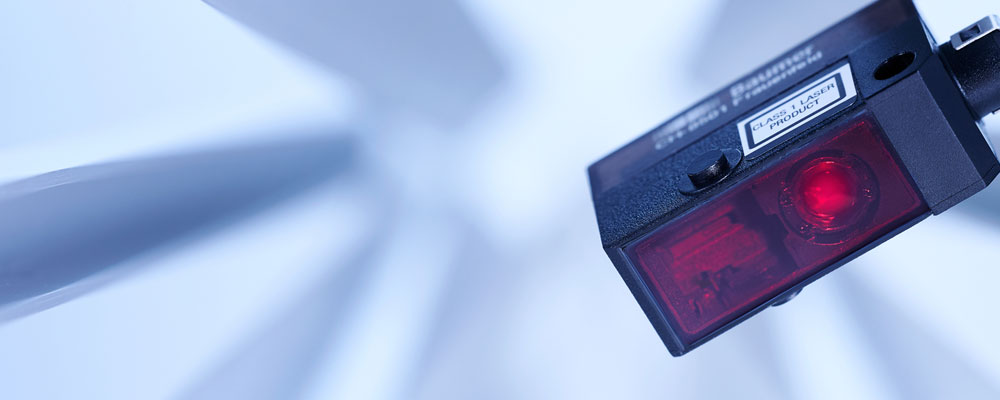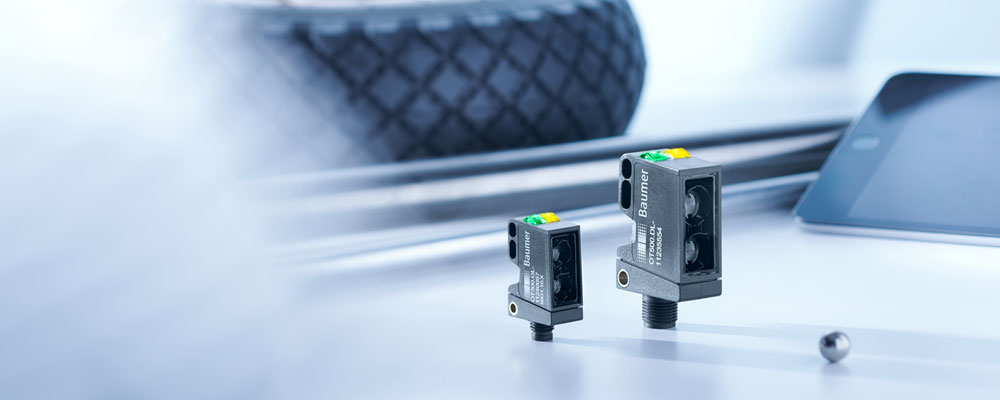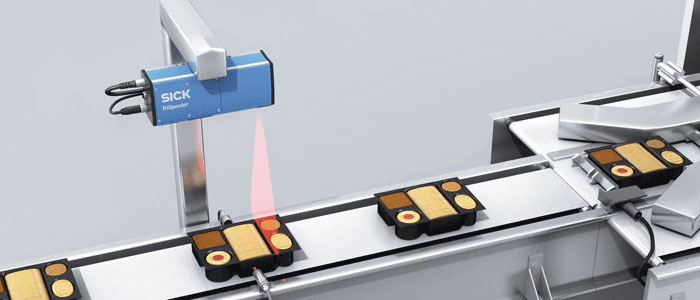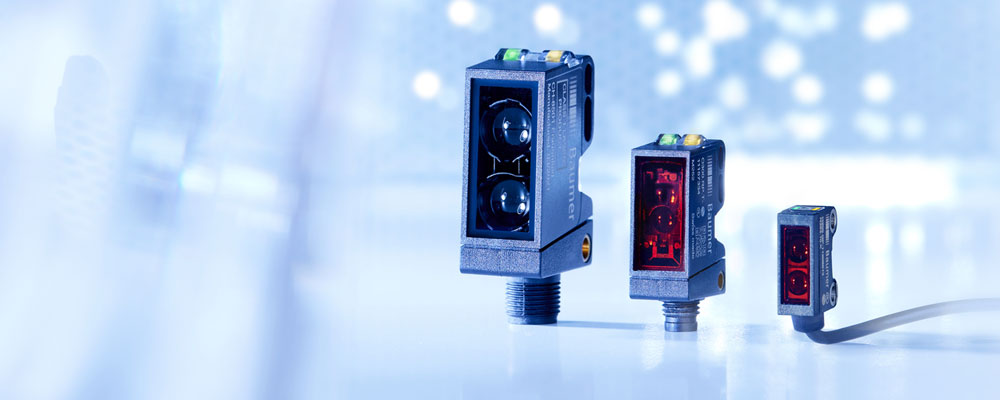
Fundamentals of Photoelectric Sensors
In the evolving world of automation and robotics, photoelectric sensors have proven to be vital components in numerous applications. Light-based sensors are widely used in industrial processes for object detection, making them a popular choice in various applications.
These sensors utilize light and electronic circuitry to detect changes in light properties, enabling reliable object detection. This introduction provides a basic understanding of photoelectric sensors, setting the stage for further exploration of their structure, mechanism, types, applications, and benefits.
What is Photoelectric Switch?
A photoelectric switch is a type of sensor that uses light waves to detect the presence or absence of an object. It essentially operates on the principle of the photoelectric effect, where light is used to generate an electrical signal.
The switch includes an LED light source and a light-sensitive receiver, such as a photodiode or phototransistor. Object interruption or reflection of light triggers the receiver to open or close the electrical circuit.
Photoelectric switches are versatile tools used in industrial automation for object counting, presence detection, and safety systems. They are appreciated for their non-contact nature, quick response time, and ability to work over relatively long distances.
Background Suppression Sensors
Understanding Background Suppression in Photoelectric Sensors
Background suppression is a concept that is commonly employed in photoelectric sensors, particularly in the diffuse sensor type. Background suppression technology enables the sensor to focus on detecting objects within a specific range by ignoring the background.
The sensor sets a cutoff distance, beyond which no objects are detected, regardless of their size or reflectivity. It enables focusing on the desired object or area while ignoring background elements that could trigger the sensor.
The background suppression sensor uses the principle of triangulation to achieve this. The light emitted by the sensor is reflected back from the object into a receiver. Based on the angle of the returned light, the sensor can estimate the object’s distance.
How Background Suppression Works
Background suppression in a photoelectric sensor works by utilizing a unique optical arrangement and triangulation principle. When the sensor emits a light beam, it reflects off the object and returns to the sensor. The angle of this reflected light varies based on the distance of the object from the sensor.
Inside the sensor, a lens focuses this reflected light onto a position-sensitive detector (PSD). The PSD is an analog device that can measure the ‘position’ of the incoming light. If the object is close, the light hits one part of the detector, and if the object is farther away, it hits a different part.
Applications and Benefits of Background Suppression
Background suppression in photoelectric sensors is incredibly useful in several applications and comes with numerous benefits:
Packaging and Material Handling: Background suppression sensors accurately detect products in diverse product lines, regardless of color or background interference.
Automated Assembly Lines: These sensors effectively detect target parts amidst a dynamic environment, ignoring background distractions.
Robotic Arms and AGVs: Used in robotic arms and Automated Guided Vehicles (AGVs), these sensors help to avoid collision by distinguishing objects from the background.
As for the benefits, these sensors:
Improve Accuracy: They drastically improve the accuracy of object detection by ignoring the background.
Versatility: They can detect objects of varying colors, reflectivities, and surfaces.
Compact and Economical: As the emitter and receiver are housed in the same unit, the installation, and alignment become easier and cost-effective.
Reliability: They provide reliable detection in situations where the background can interfere with the sensing process.
Retro reflective Type Sensor with Polarizing Filters
What is a Retro Reflective Type Sensor with Polarizing Filters?
Retro-reflective type sensors with polarizing filters, also known as polarized retro-reflective sensors, are a specific type of photoelectric sensor. These sensors employ a unique method to detect objects, particularly those that are transparent or shiny.
The main elements of these sensors are the emitter, which sends out light, and the receiver, which receives the light. The significant feature here is the polarizing filter, which only allows light waves aligned in a particular direction to pass through it.
The sensor operates by emitting polarized light toward a reflector. When the light hits the reflector, it becomes scattered, and its polarization changes. The light then bounces back towards the sensor, passing through another polarizing filter. This returned light can only be detected if it has the correct polarization.
This mechanism is particularly useful in preventing false detections caused by transparent or reflective objects that could mimic the reflector. The polarizing filters enhance sensor reliability and accuracy by detecting only light that has undergone polarization alteration upon hitting the reflector.
Working Principle of Retro-reflective Sensor
A retro-reflective type sensor with polarizing filters operates based on the principle of polarization of light. Here’s how it works:
The light emitter inside the sensor sends out a beam of polarized light. This light is polarized in one specific orientation.
The polarized light travels to a special reflector that changes the orientation of the light’s polarization when it is reflected.
The light, now with a different polarization, travels back toward the sensor.
Before reaching the sensor’s light receiver, the reflected light must pass through another polarizing filter. This filter only allows light with a specific orientation to pass through – matching the orientation caused by the reflector.
Key Applications and Advantages
Retroreflective sensors with polarizing filters have wide-ranging applications across various industries due to their unique advantages. Here are a few examples:
Packaging and Material Handling: These sensors excel at detecting clear materials like glass and plastic, often used in packaging. They can identify the presence of clear film or bottles, ensuring no step in the process is missed.
Automotive Industry: In production lines, they can verify whether parts like windshields are present and correctly positioned, contributing to enhanced quality control.
Pharmaceuticals and Healthcare: Their precise detection capabilities are beneficial for identifying small transparent items, such as vials or test tubes, improving process accuracy.
The advantages of using these sensors
Resistance to False Triggers: The polarizing filter helps prevent false triggers from shiny or reflective surfaces, improving the reliability of the detection system.
Precision: These sensors are capable of detecting transparent and highly reflective objects that other sensor types might miss, ensuring high precision in operations.
Versatility: The ability to detect a wide range of materials makes these sensors a versatile choice for various applications.
Detection Based on “Light” in Photoelectric Sensor
Role of Light in Photoelectric Sensor Operation
Light plays a crucial role in the operation of a photoelectric sensor. Essentially, these sensors work by emitting a light beam (visible or infrared) from their light-emitting element. This light beam is then bounced off the object to be detected and captured by a light-receiving element within the sensor.
The sensor continually measures the intensity of the received light. When an object comes into the path of the light beam, it causes a reduction in the light intensity received by the sensor. The sensor identifies this change and produces an output signal accordingly.
In other words, the basic principle of detection in a photoelectric sensor is the interruption or reflection of the emitted light beam by the target object. This fundamental concept is what allows photoelectric sensors to detect the presence, absence, or change in position of an object.
Light Detection Methods in Photoelectric Sensors
Different types of photoelectric sensors use various methods for light detection:
Through-beam Sensors: In through-beam sensor mode, the emitter and receiver are positioned opposite each other. The sensor detects an object when it breaks the light beam between the emitter and the receiver.
Retro-reflective Sensors: In this type, the emitter and receiver are in the same housing. An external reflector is used to bounce the light beam back to the receiver. The sensor detects an object when it interrupts the light beam.
Diffuse Sensors: Like retro-reflective sensors, diffuse sensors also have the emitter and receiver in the same housing. However, they do not use an external reflector. Instead, they detect an object when the object reflects the light beam back to the receiver.
Background Suppression Sensors: This is a type of diffuse sensor that can ignore the background beyond a certain distance. It does this by using a triangulation method that measures the angle of the returned light.
Different light detection methods are utilized for various applications, considering factors such as object characteristics, operating conditions, and required sensing range.
Implications for Sensor Performance and Applications
The method of light detection used in a photoelectric sensor has significant implications for its performance, efficiency, and the range of applications it can support. Here’s how:
Through-beam Sensors: These sensors provide long-range and reliable object detection, unaffected by color, material, or surface properties. Commonly used in high-speed, precise object detection applications like assembly lines, packaging, and material handling systems.
Retro-reflective Sensors: These sensors are suitable for applications that require medium operating ranges. They are versatile and can detect a variety of objects, including those with irregular surfaces. Typical applications include industrial automation systems, safety barriers, and vehicle detection systems.
Diffuse Sensors: These sensors are ideal for detecting objects at close range. Their ability to detect without the need for a reflector or separate receiver makes them suitable for applications with space limitations. They are commonly used in food and beverage, pharmaceutical, and cosmetic industries for product detection tasks.
Background Suppression Sensors: These sensors are perfect for applications where it’s crucial to ignore the background or where the background’s color and reflectivity may vary. They are particularly beneficial in logistics and warehousing systems for presence detection and object differentiation tasks.
Selecting the correct light detection method can significantly enhance the performance of a photoelectric sensor and make it more suitable for a particular application.
Features and Advantages of Photoelectric Sensor
Key Features of Photoelectric Sensors
Versatility: Photoelectric sensors can detect objects of varying sizes, shapes, and materials, making them suitable for a wide range of applications.
Non-contact Sensing: As they use light to detect objects, there’s no physical contact involved. This feature is crucial for applications where the object cannot be touched or might be damaged by contact.
Long Sensing Range: Some photoelectric sensor models, especially through-beam types, can sense objects from a considerable distance, which is beneficial in many industrial applications.
Quick Response Time: The electronic circuitry and the use of light beams allow photoelectric sensors to respond quickly, making them useful in high-speed production lines.
High Accuracy: Photoelectric sensors offer high sensing accuracy, which is critical in precision applications. For instance, they can accurately detect the presence of small objects on a conveyor belt in an assembly line.
Ease of Installation and Maintenance: Photoelectric sensors are generally easy to install and maintain. Their no-contact sensing capability means less wear and tear, resulting in lower maintenance costs.
Various Output Options: Photoelectric sensors can have various output configurations, including PNP, NPN, and relay outputs, allowing them to interface easily with different types of control systems.
Advantages and Benefits of Using Photoelectric Sensors
Versatile Sensing: Photoelectric sensors can detect objects of any material, color, or transparency level, making them versatile for diverse applications.
No Contact Damage: As they are non-contact devices, they don’t cause any physical wear or damage to the objects being sensed, thereby increasing product lifespan.
Long Sensing Distance: With certain types capable of sensing over large distances, they can be used in applications where the object and the sensor need to be far apart.
High-Speed Detection: The quick response time of photoelectric sensors allows for high-speed object detection, making them perfect for high-speed production lines.
Accurate and Reliable: They provide accurate and reliable detection due to their high sensitivity and the precision of optical sensing technology.
Easy Integration: Photoelectric sensors are easy to integrate into existing control systems, as they provide a variety of output options and can operate with both DC and AC power sources.
Durable and Robust: Most photoelectric sensors are encased in rugged housing for durability and are often rated for high IP protection levels, making them suitable for harsh environments.
Detection Methods of Photoelectric Sensors
Overview of Various Detection Methods
Through-Beam Detection: This is the most reliable method for object detection. It uses two separate units: an emitter and a receiver. When an object breaks the light beam emitted by the emitter, the receiver detects the interruption and triggers a response.
Retro-Reflective Detection: This method uses an emitter and receiver in the same unit and a reflector. The emitter sends light to the reflector, which sends the light back to the receiver. When an object interrupts the light beam, it is detected.
Diffuse Detection: In this method, the emitter and receiver are in the same unit. The light from the emitter reflects off the object and back to the receiver. The sensor detects the object when it receives the reflected light.
Background Suppression: A variation of diffuse detection, this method uses triangulation to detect objects within a specified range, ignoring objects beyond that range. It’s used for applications where background objects should not be detected.
Polarized Retro-Reflective: This mode uses polarizing filters to detect transparent objects that wouldn’t be detected using the regular retro-reflective method.
Contrast Detection: This method detects objects based on the difference in the light intensity reflected from the object and the background. It’s typically used for color mark detection on surfaces.
Factors to Consider Choosing the Right Detection Method
Object Properties: Object properties (size, shape, color, material) impact detection method choice. Diffuse sensors detect most objects but struggle with small, flat, or reflective ones.
Environmental Conditions: Factors such as ambient light, temperature, and the presence of dust, moisture, or other airborne particulates can impact sensor performance. Some detection methods are more robust against these environmental factors than others.
Range and Accuracy Requirements: Different detection methods offer different sensing ranges and levels of detection accuracy. The right choice will depend on the specific range and accuracy needs of the application.
Installation and Maintenance Considerations: The ease of installation, alignment, and maintenance of the sensor can also influence the choice of the detection method. For instance, through-beam sensors can be more challenging to install and align than retro-reflective or diffuse sensors.
Cost: Detection methods vary in cost, including upfront purchase, installation, maintenance, and potential replacement expenses. These costs need to be weighed against the performance benefits of each method.
Conclusion
Understanding the functionality and advantages of photo sensors, particularly their various detection methods, is crucial for effective applications in many industries. Each sensor type, including background suppression, retro-reflective, and through-beam, has unique advantages based on its design and operation.
Understanding how light a pivotal role plays in their operation is crucial. Several factors, such as object properties, environment, range, and accuracy requirements, guide the selection of the appropriate sensor and detection method.





